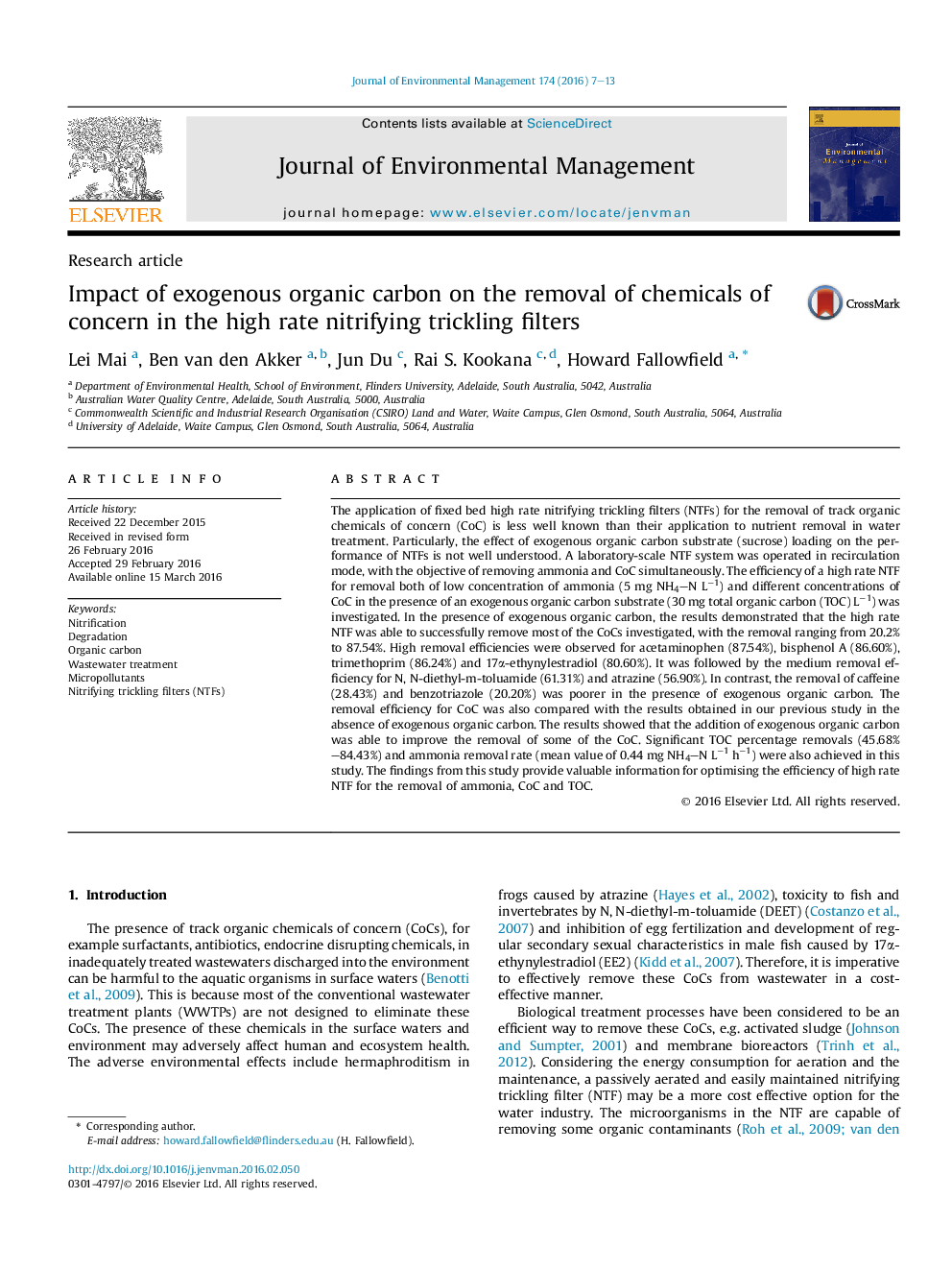| Article ID | Journal | Published Year | Pages | File Type |
|---|---|---|---|---|
| 1055387 | Journal of Environmental Management | 2016 | 7 Pages |
•The nitrifying trickling filter can remove the organic chemicals effectively.•Degradation is the dominant process for the removal of chemicals.•The removal efficiency varies for different chemicals.•High initial nitrification rate can increase chemical removal efficiency.•The nitrification rate can be depressed in the presence of some organic chemicals.
The application of fixed bed high rate nitrifying trickling filters (NTFs) for the removal of track organic chemicals of concern (CoC) is less well known than their application to nutrient removal in water treatment. Particularly, the effect of exogenous organic carbon substrate (sucrose) loading on the performance of NTFs is not well understood. A laboratory-scale NTF system was operated in recirculation mode, with the objective of removing ammonia and CoC simultaneously. The efficiency of a high rate NTF for removal both of low concentration of ammonia (5 mg NH4–N L−1) and different concentrations of CoC in the presence of an exogenous organic carbon substrate (30 mg total organic carbon (TOC) L−1) was investigated. In the presence of exogenous organic carbon, the results demonstrated that the high rate NTF was able to successfully remove most of the CoCs investigated, with the removal ranging from 20.2% to 87.54%. High removal efficiencies were observed for acetaminophen (87.54%), bisphenol A (86.60%), trimethoprim (86.24%) and 17α-ethynylestradiol (80.60%). It was followed by the medium removal efficiency for N, N-diethyl-m-toluamide (61.31%) and atrazine (56.90%). In contrast, the removal of caffeine (28.43%) and benzotriazole (20.20%) was poorer in the presence of exogenous organic carbon. The removal efficiency for CoC was also compared with the results obtained in our previous study in the absence of exogenous organic carbon. The results showed that the addition of exogenous organic carbon was able to improve the removal of some of the CoC. Significant TOC percentage removals (45.68%–84.43%) and ammonia removal rate (mean value of 0.44 mg NH4–N L−1 h−1) were also achieved in this study. The findings from this study provide valuable information for optimising the efficiency of high rate NTF for the removal of ammonia, CoC and TOC.
